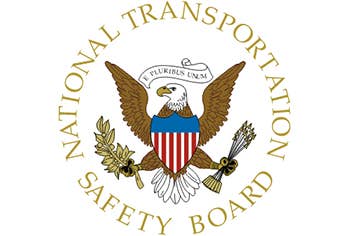
NTSB seal NTSB
The following is an excerpt from official NTSB summaries of general aviation accidents in the United States.
NTSB investigators either traveled in support of this investigation or conducted a significant amount of investigative work without any travel, and used data obtained from various sources to prepare this aircraft accident report.
Piper PA-18-150
Chuglak, Alaska/Injuries: 2 Fatal
The private pilot and his sole passenger were on a personal cross-country flight between two Alaskan communities. The destination airport was located along the shores of an inlet waterway, and the airplane's intended approach would have been over the water. About three hours after the flight departed, the pilot issued a distress call, which was received by state law enforcement. The pilot stated that the airplane had crashed in the water, and he requested immediate rescue, adding that he was too far from shore to swim. The airplane was located the next morning about 1.8 miles from the destination airport almost completely submerged in water. When the airplane was recovered, neither of the occupants were inside. About two weeks later, the passenger’s body was recovered. The pilot’s body was not recovered.
Recovered GPS data revealed that, during the last 10 minutes of the flight, the airplane climbed to a peak altitude of 1,549 feet mean sea level (msl) while traveling a distance of about 6 nautical miles (nm) and then began a descent that averaged about 176 feet per minute (fpm). About 3 nm from the destination airport, the airplane’s descent rate increased to an average of about 890 fpm, and the airplane then entered a slight right, southerly turn toward the nearest point of land. The last data point showed the airplane at 29 feet msl and less than 1 mile from the closest point of land.
A post-accident examination of the airframe and engine revealed no mechanical malfunctions or anomalies that would have precluded normal operation. An aviation weather reporting station located 2 miles southeast of the accident site reported weather conditions about the time of the accident that were conducive to moderate carburetor icing at cruise power or serious icing at glide power. However, the investigation could not determine whether carburetor icing caused the loss of engine power.
Probable Cause: The loss of engine power for reasons that could not be determined because post-accident examination of the airframe and engine did not reveal any mechanical malfunctions or failures that would have precluded normal operation.

Sign-up for newsletters & special offers!
Get the latest FLYING stories & special offers delivered directly to your inbox






